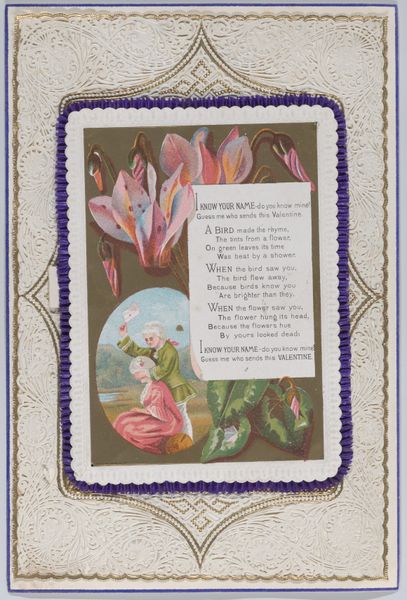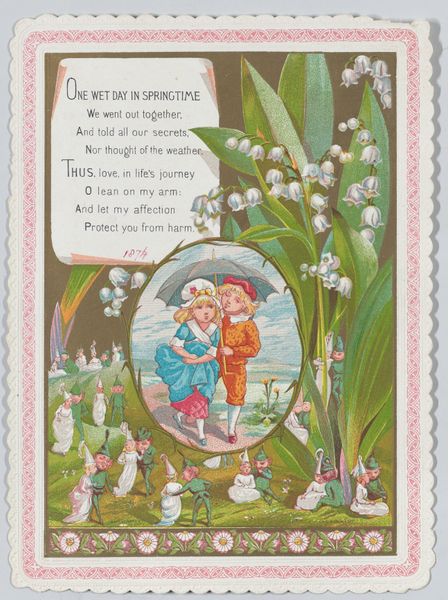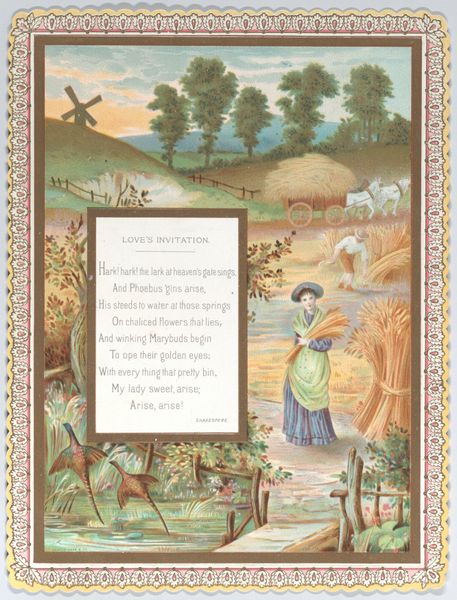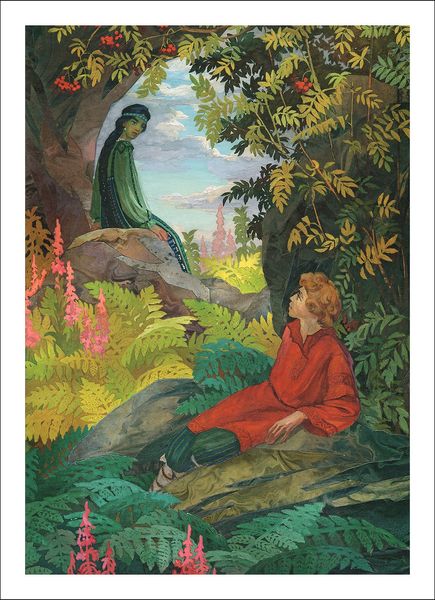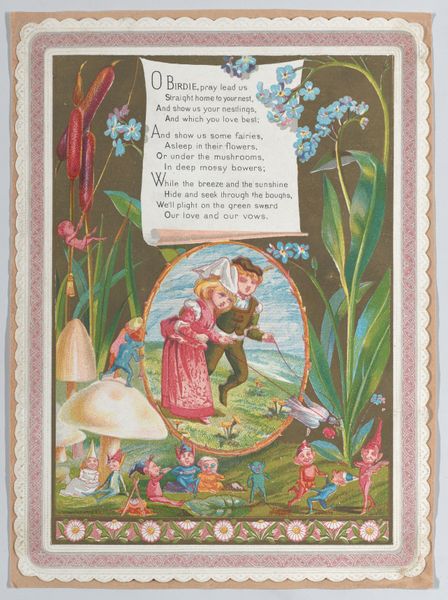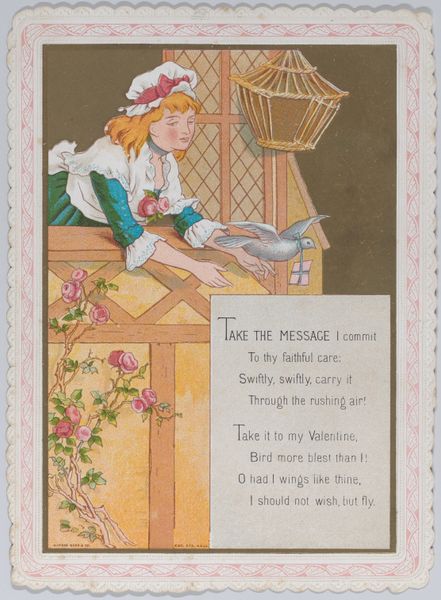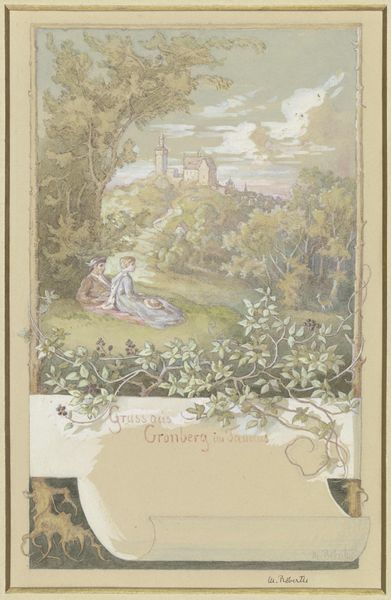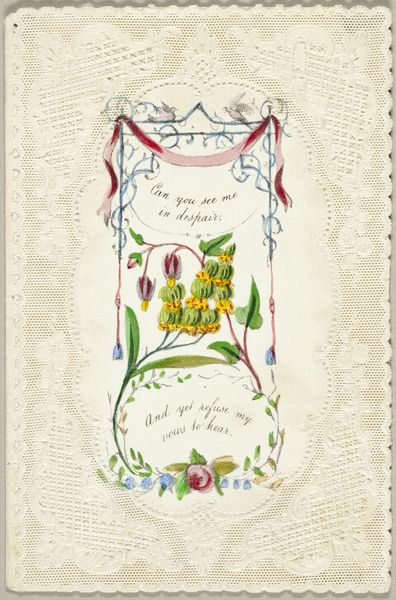
Dimensions: Width: 4 15/16 in. (12.5 cm) Length: 6 3/4 in. (17.1 cm)
Copyright: Public Domain
Curator: We're looking at "Valentine," a watercolour and print piece created by Kate Greenaway in 1874. Editor: The overall sentiment is… whimsical. It gives off a light, almost fairy-tale mood, even bordering on saccharine due to the lace-trimmed edges and palette. Curator: Precisely. Note how Greenaway meticulously orchestrates color to evoke a sense of childlike innocence and idyllic romanticism. The positioning of figures, flowers, text—it is designed to appeal to Victorian sensibilities concerning sentimentality. Editor: It's a highly manufactured sweetness, wouldn't you agree? The materiality points to its intended purpose as a commercial product. The labor involved—printing processes, the application of watercolor—becomes almost invisible, replaced by an image of leisurely romantic pursuit. This kind of genre-painting sentimentalism often concealed exploitative production. Curator: That very "invisibility," as you call it, is key. Greenaway uses a limited depth of field, flattening the image to direct focus. Semiotics reveal the text reinforces idealized courtship, a controlled narrative shaping emotional reception. Editor: Yet, I can't ignore the means of reproduction and distribution. This wasn't aimed at a fine art gallery but a wide, purchasing public. The materiality and process make a clear statement on the rise of consumer culture and its effects. Also, I can’t overlook the underlying unease in the verse with stealing away "lest a frown should repay." It touches on hidden costs. Curator: An intriguing juxtaposition, perhaps intentionally woven into the image to elicit contemplation within established Romantic themes. Editor: Ultimately, this speaks to how commodities can both embody and obscure social conditions, all while being steeped in affect. Curator: Indeed, its complex layering provides fertile ground for diverse readings. Editor: It reveals the labor and manufacturing realities involved in art making.
Comments
No comments
Be the first to comment and join the conversation on the ultimate creative platform.
